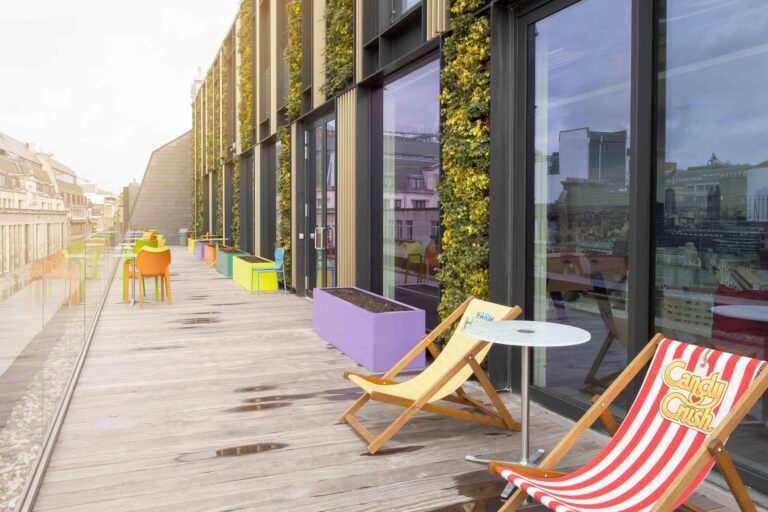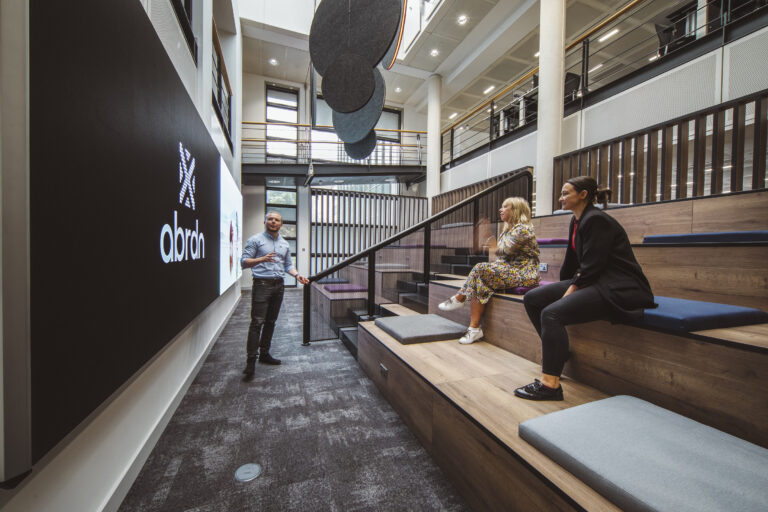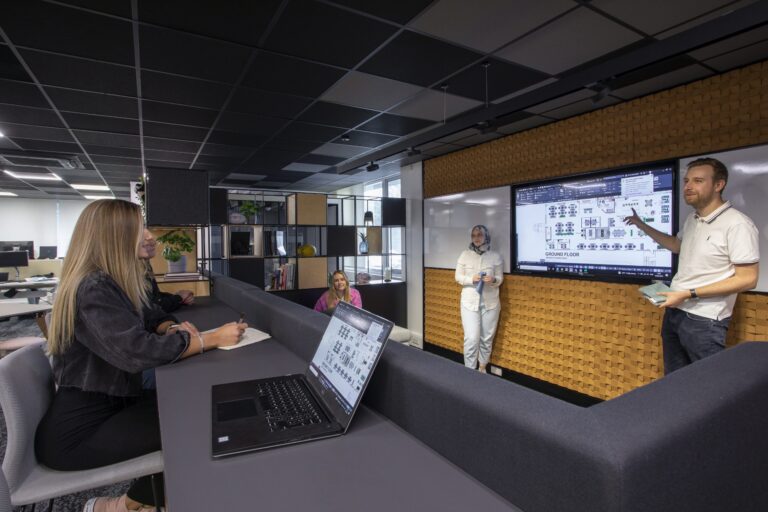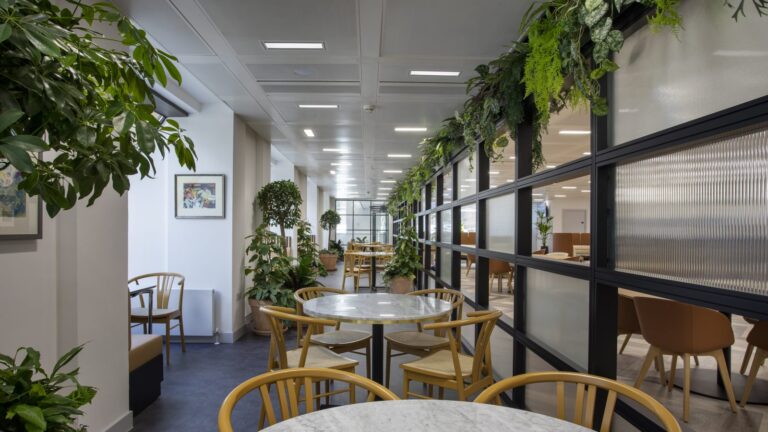
The Effects of Biophilic Design – Part 1
Date
23 January 2023
Read length
5 min
The term ‘biophilic design’ is becoming increasingly popular in the world of offices. When people search for biophilic meaning, they often think only of a few plants scattered around the office, but biophilic office design is so much more than that.
Let’s talk about what it really means…
What is biophilic design?
Put simply, the biophilic design meaning goes far beyond adding a plant to your desk. At its core, it’s about reconnecting people with nature in the built environment.
To understand biophilic design, as a concept and in practice, let’s first take a look at where the term comes from…
- “Bio” – Coming from the word ‘Biology’, meaning related to living organisms, creatures, and plants.
- “Philia” – Coming from the Greek word ‘philos’, which literally translates to ‘beloved’.
Bio-Philia literally means to love nature.
The psychology behind biophilic design
Although the true biophilic meaning is to love nature, in the context of workplaces, it has evolved to mean something more complex, an approach that underpins modern biophilic office design. Edward Wilson (1984) referred to biophilia as “the urge to affiliate with other forms of life”, essentially meaning the internal and innate desire for people to connect with the natural world
One explanation as to why humans have a natural inclination to surround themselves with nature can be linked back to Psychology. More specifically, Evolutionary Psychology uses ‘biophilic hypotheses’ to explain why we feel such a strong connection to nature. Looking back over thousands of years of human evolution, it’s clear that we evolved to live in an environment that was mainly outdoors, if not very closely associated with nature, plants, animals, and other environmental factors such as the weather and the seasons.
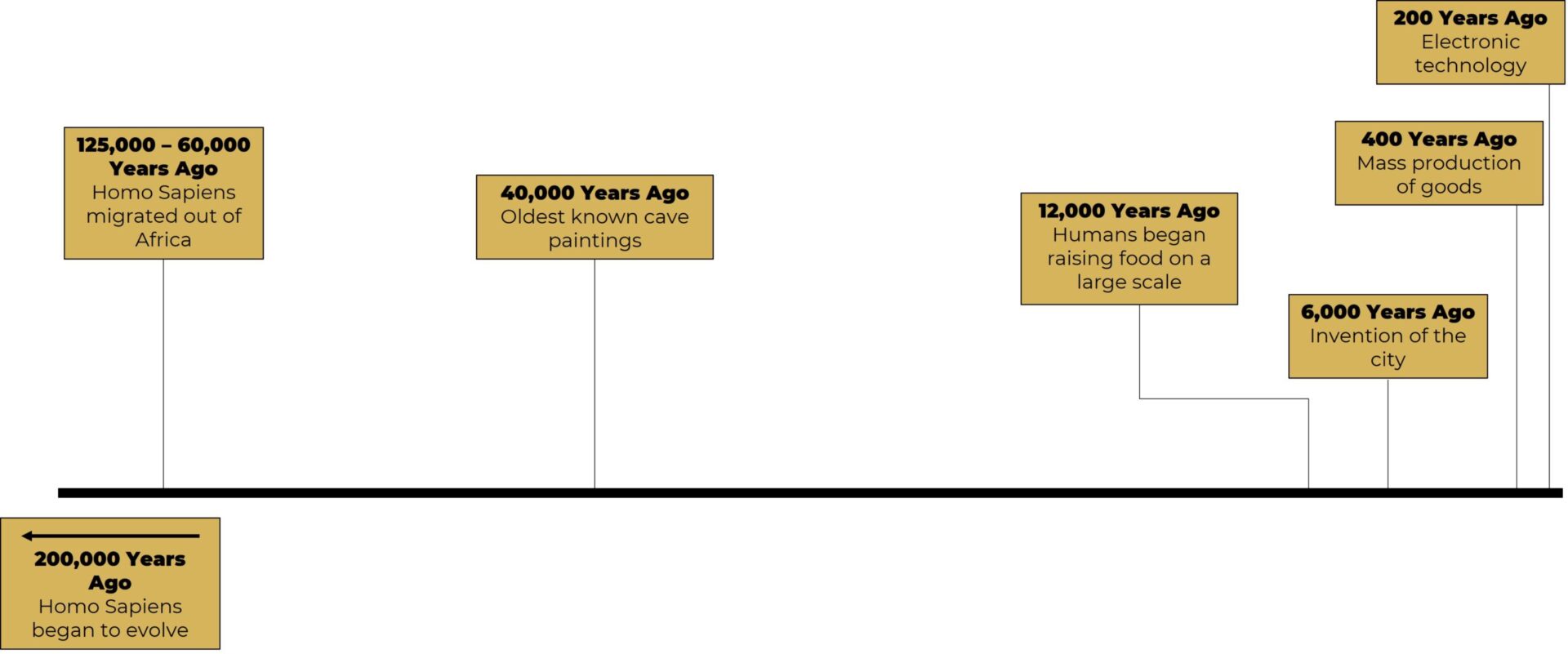
As shown in the graph above, although it may feel like humans have been indoors for a long time, it is short when we compare it to the rest of evolution. Only recently in our history have humans moved towards an urbanised lifestyle. The reason we continue to seek out these natural environments is explained by the fact that this is what we evolved to survive in, and it complements our minds and bodies best.
Why is biophilic design important?
Nowadays, we spend a lot of time indoors, away from nature. Studies show that we Brits spend around 90% of our time inside, and 80% of UK office workers spend less than 1 hour a day outside. If we take our understandings of evolutionary psychology into consideration, it is clear that we are not designed to sit in a bland and uninspiring building for 90% of our lives! If we assume the average full-time office worker is in the office for most of their day, that is already nearly a third of their working week spent inside a building with potentially no access to nature. By incorporating biophilic design principles into our internal surroundings, we can begin to reconnect with nature and reap its rewards.
Benefits of biophilic office design
Various studies have shown the benefits of incorporating biophilic design into a variety of settings. It has been proven to have benefits in hospitals, schools and in domestic settings such as apartment complexes. In working environments like offices, the incorporation of biophilic design has been shown to increase creativity and productivity, alongside relieving stress and improving overall well-being.
It is clear that biophilic design and its application have their benefits, but how do we apply it to our offices? In 2015, Stephen Kellert and Elizabeth Calabrese simplified the principles of Biophilic Design into 3 key pillars: Direct experience of nature, Indirect experience of nature, and Experience of space and place. In our upcoming biophilic design blog series, we will take a deep dive into each of these pillars.
In the meantime, if you want to see how biophilic office design can help shape your space and bring the true biophilic design meaning to life, check out ‘Our Work’.
See how we could help with your new office interior design or office design and build project here
Get in touch
We love nothing better than talking all things workplace and design – got a question, potential project or just need some guidance?
Drop us a note…


